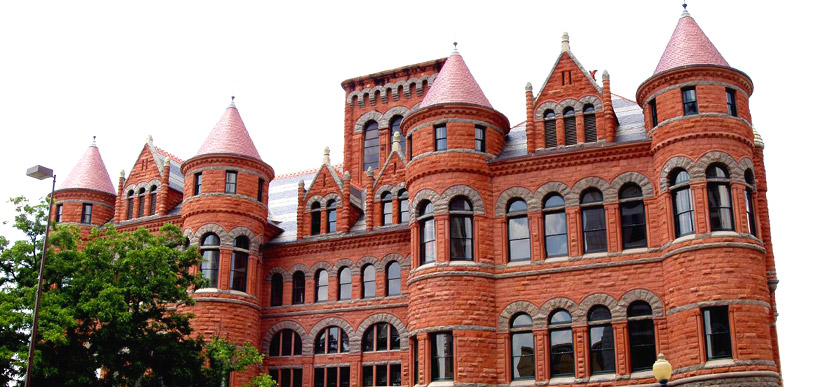Influenced by the Romanesque architecture, the Romanesque Revival style came into prominence in the mid-19th century. It is also referred to as the ‘Norman style’ or the ‘Lombard’ style. This style of architecture was widely used in the construction of churches and a few synagogues. One of the best examples of synagogues constructed using this style is the New Synagogue of Strasbourg.
A form of Romanesque Revival style existed in German lands during the early 19th century called ‘Rundbogenstil’. It translates in English as ‘the round-arched style’. The origins of Romanesque Revival style can be traced back to the 17th century. Around this time, it was developed in the British Isles starting with the Tower of London.
Romanesque Revival was widely recognized as an architectural style during the early 19th century. Among the prominent buildings constructed using this style in the British Isles was the Gosford Castle in Ireland. It was designed by the English architect, Thomas Hopper. However, even more popular was his design of Penrhyn Castle in North Wales.
Features of Romanesque Revival style
Buildings constructed in the Romanesque Revival style are easily identified by their round arches. The construction of such buildings are carried out using heavy, massive stones or bricks. Most of them have round towers, decorative plaques, and squat columns. The decorative plaques are characterized by intricate or interlacing patterns.
During those times, wooden buildings were easier to build than the ones that involved masonry. Structures built in Romanesque Revival style were less common than the buildings executed in wood in the Victorian-era style. Later, many university buildings, churches, prisons, and other public buildings were constructed in Romanesque Revival style.
One of the major reasons for this was a strong sense of gravity and permanence that this style of architecture provided. As opposed to the historic Romanesque style, Romanesque Revival features more simplified windows and arches. The popularity of this architectural style gradually spread to other countries like Sweden, Canada, and the United States of America.
Widespread use in the United States
It was introduced in the United States during the mid-19th century. This was the period when architectural ideas from Europe based on ancient Roman buildings were brought to the country. Initially, only a few public buildings were constructed in the Romanesque Revival style. It was the architect Henry Hobson Richardson, who adopted this style and made it popular.
Richardson had graduated from the prestigious Ecole des Beaux Arts in Paris. He developed a more dramatic version of this architectural style. He included strong sculptural forms and wider, bolder arches in his designs. His version of Romanesque Revival style was used mostly for public buildings. Later, it also became popular for constructing residential homes.
Interest in this style of architecture never diminished, even after the death of Richardson in 1886. Among the most prominent buildings that he designed were Sever Hall and the Trinity Church of Boston. The Allegheny Courthouse and Jail located in Pittsburgh is yet another best-known building that he constructed in this style.
This building inspired the design and construction of several buildings surrounding Pittsburgh. For more than a decade, the construction around southwestern Pennsylvania was influenced by Allegheny Courthouse and Jail. Many surviving courthouses and train stations of Pittsburgh have been constructed in the Romanesque Revival style as well.

